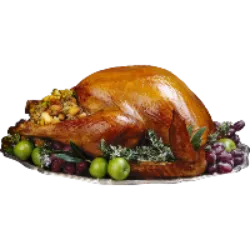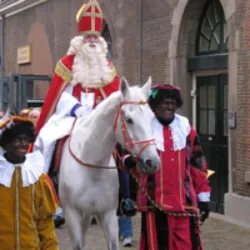Curiosities and Challenges about Christmas
Do you like Christmas?
Would you like to see more curiosities like these..
Santa Claus has roots in Saint Nicholas of Myra, a third-century saint from Turkey known for his compassion for the....
The colors red, green and gold associated with Christmas have symbolic meanings. Red is linked to the blood of Christ..
In Europe and the United States, most of Santa's reindeer have traditionally masculine names, such as Rodolfo, Comet,....
So.. How about a Challenge on the Best Quiz Platform in the World?
The magic of generosity and the spirit of solidarity
Get to know a little about everything and bet on your knowledge in incredible challenges and duels..
Join the betspot.zone community, accumulate bts (bets) and even compete for prizes..
Discover some interesting facts about Christmas..
Santa Quiz - Santa Curiosities -Santa Challenge - baby jesus Quiz - baby jesus Curiosities - baby jesus Challenge - merry christmas Quiz - merry christmas Curiosities - merry christmas Challenge - Santa Claus Quiz - Santa Claus Curiosities - Santa Claus Challenge - - Frequently asked questions about Christmas
Christmas in India

Christmas in India is a festive celebration that combines Christian traditions with local cultural influences. Homes and churches are decorated with Christmas lights and trees, and celebrations include live nativity scenes, Christmas carols and Midnight Mass. Exchanging gifts is a tradition, and festive meals include local dishes and Western delicacies. Furthermore, Christmas in India reflects religious tolerance, with people from different religious backgrounds participating in the celebrations.
publicity
Christmas in Poland

Christmas in Poland is marked by deeply religious and cultural traditions. Christmas dinner, known as Wigilia, is the most important event, starting with the first star on Christmas Eve. The meal is meatless and includes dishes such as fish, obleas shared among the family and wishes for happiness. Gift giving is often attributed to Dziadek Mroż or the Christmas Angel. The kolędnicy, groups of Christmas singers, visit homes. The first star on Christmas Eve is significant, and Christmas masses are fundamental. Christmas in Poland is a spiritual celebration centered on the birth of Jesus, filled with family and community traditions.
Christmas in Portugal

Christmas in Portugal is a celebration marked by religious and cultural traditions. Midnight Mass is one of the most important traditions. Consoada, the Christmas Supper, is a festive meal with traditional dishes. Setting up nativity scenes at home is common, and children often sing Christmas songs like the Three Kings in exchange for donations. Bolo-Rei is a traditional delicacy, and exchanging gifts is becoming more popular. Some traditions include Christmas bonfires, themed Christmas villages, and decorative maypoles. Christmas in Portugal is a celebration rich in meaning and culture.
Christmas in Italy

Christmas in Italy is a celebration that highlights religious and cultural traditions. The nativity scene is a fundamental tradition, and families often set up detailed representations of the scene of Jesus' birth. Midnight Mass is an important part of the festivities. Christmas dinner is a festive meal with traditional Italian dishes. The Italian Santa Claus, called "Babbo Natale," plays a role in delivering gifts. Saint Stephen's Day is celebrated on December 26th. Epiphany, on January 6, features the figure of "La Befana." Christmas markets, festive decorations and delicacies such as panettone and pandoro are an integral part of the celebrations. Italian Christmas is a warm, family-friendly celebration.
publicity
Christmas in Ireland

Christmas in Ireland is a celebration that combines religious and cultural traditions. The houses are decorated with candles in the windows and twinkling lights. Midnight Mass is an important part, and singing Christmas carols is a cherished tradition. Families share a festive supper with traditional dishes, and Boxing Day is celebrated the following day. Santa Claus delivers gifts, and Christmas light festivals and dancing are common. Generosity is emphasized, with donations to those in need. Ireland celebrates Christmas in a warm and festive way, combining tradition and fun. Therefore, they maintain the custom of saving Santa a piece of meat and Guinness beer.
Christmas in France is marked by a rich culinary tradition

Christmas in France is marked by a rich culinary tradition, with a festive dinner that includes sophisticated dishes. Midnight Mass is a religious tradition held at midnight on Christmas Eve. In the Provence region, there is the tradition of the "Thirteen Desserts" that represent Jesus and the apostles. Santa Claus is called "Père Noël" and he distributes gifts. Christmas markets are popular, and the Advent Calendar is a common countdown. Christmas Eve is a night of celebration, and the French also celebrate St. Stephen's Day on December 26th. Singing Christmas carols and exchanging gifts are part of the celebrations.
Christmas in Finland involves unique traditions

Christmas in Finland involves unique traditions, such as a Finnish Santa Claus called Joulupukki, who personally delivers gifts. Christmas decorations, including decorated trees and candles, are essential. A festive feast includes traditional dishes such as "kalakukko". The Christmas sauna is a tradition, followed by a dip in the snow. Ice igloos and Santa Claus villages are popular attractions. Lighting candles on graves is a way to honor loved ones. Traditional dances and music complement the celebrations, making Finnish Christmas a special and welcoming time.
publicity
Holly leaves

Holly leaves are used in Christmas celebrations due to their symbolism of life and hope, as they remain green throughout the winter. They are incorporated into wreaths, arrangements and holiday decorations to represent the vitality and joy of the season. Additionally, holly had superstitions of protection against evil and is often combined with mistletoe. There is also a tradition of kissing under the holly tree during Christmas as a symbol of good luck and love.
The tradition of serving turkey at Christmas has historical

The tradition of serving turkey at Christmas has historical origins in Europe, especially in England, where it became popular during the reign of Queen Victoria. This tradition spread to the United States and other English-speaking countries. The Christmas turkey is roasted and served with typical sides, such as cranberry sauce and potatoes, and is a central part of Christmas celebrations, symbolizing family reunion and the festivity of the season. Other birds, such as goose, duck and chicken, are also served in some regions of the world.
The tradition of placing a star at the top of the Christmas

The tradition of placing a star at the top of the Christmas tree represents the "Star of Bethlehem", which guided the Three Wise Men to the birthplace of Jesus. It is a symbol of faith, hope and the "Light of the World". Placing the star on top of the tree is a special moment in Christmas celebrations, and this tradition has deep religious and cultural connections around the world.
publicity
The tradition of giving gifts at Christmas has diverse origi

The tradition of giving gifts at Christmas has diverse origins, including the offering of the Three Wise Men to Jesus, influences from pagan winter festivals, the generosity of Saint Nicholas (Santa Claus), the Protestant Reformation and the growth of consumer culture in the 19th century. XIX. Today, exchanging gifts at Christmas symbolizes generosity, love and gratitude, and is a fundamental part of Christmas celebrations in many cultures around the world.
The nativity scene

The nativity scene is a Christmas tradition that represents the scene of the birth of Jesus Christ. It usually includes figures such as Mary, Joseph, Baby Jesus, shepherds, the Three Wise Men, angels, animals and a star of Bethlehem. Saint Francis of Assisi popularized this tradition in the 13th century to remember the true meaning of Christmas, and people often set up nativity scenes at home or in public places as part of Christmas celebrations.
The Dutch have a controversial tradition in which Santa Clau

The Dutch have a controversial tradition in which Santa Claus arrives on the third Sunday of November in a sleigh filled with gifts and is accompanied by 40 men dressed in medieval costumes, called "Zwarte Pieten" (Peter the Black), who have black skin. and red lips, which sparked debates about negative stereotypes for people with dark skin. Furthermore, Anglo-Saxon countries have Krampus, a mythological figure who accompanies Santa Claus and scares naughty children.
publicity
For many of us, cobwebs evoke negative thoughts

For many of us, cobwebs evoke negative thoughts, associated with dirt, suspense and even terror. However, in Poland, spiders and their webs are common Christmas decorations. According to a local legend, it is believed that it was spiders that wove the cradle for baby Jesus at his birth. Furthermore, Polish people consider spiders to be symbols of kindness and prosperity during Christmas.
In Europe and the United States

In Europe and the United States, most of Santa's reindeer have traditionally masculine names, such as Rodolfo, Comet, Cupid, Thunder and Lightning, while the others are called Runner, Dancer, Prancer and Fox. However, during part of the year, male reindeer lose their antlers. So despite their masculine names, it's likely that the reindeer pulling Santa's sleigh are actually female. The idea of Santa's reindeer has roots in Norse and Scandinavian mythology. Rudolph, with his bright red nose, is one of the most famous reindeer in history.
The colors red

The colors red, green and gold associated with Christmas have symbolic meanings. Red is linked to the blood of Christ and the clothing of Saint Nicholas. Green symbolizes the renewal of life and is associated with decorating Christmas trees. Gold represents the star that guided the Three Wise Men to Jesus and is used to add shine and richness to Christmas decorations. These colors play an important role in creating the festive atmosphere of Christmas.
publicity
Santa Claus has roots in Saint Nicholas of Myra

Santa Claus has roots in Saint Nicholas of Myra, a third-century saint from Turkey known for his compassion for the poor and children. However, the original image of Saint Nicholas was more austere, unlike today's Santa Claus. Furthermore, Odin, the Viking god, also influenced the figure of Santa Claus, distributing gifts in winter.
Back
